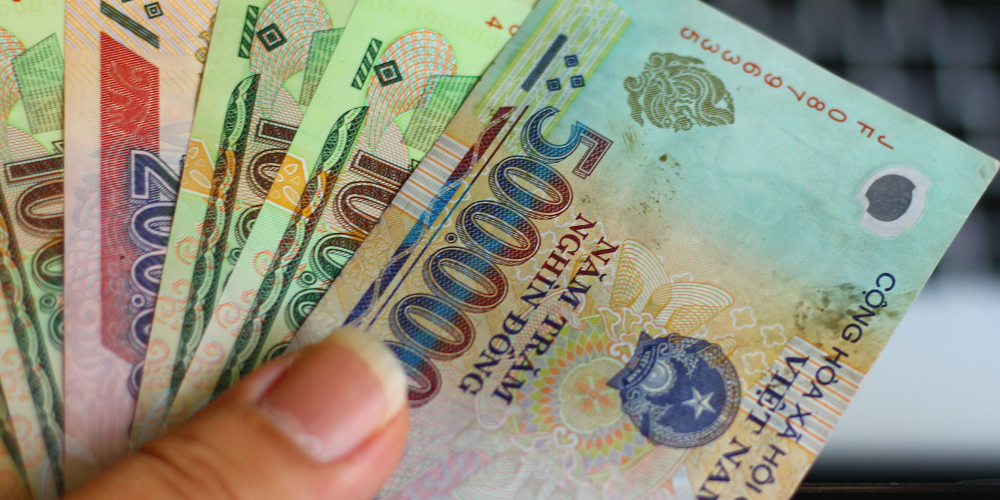Industry Reports
Digital HealthTech: Transforming Healthcare with Technology

Summary
Explore Southeast Asia’s Digital HealthTech growth—AI, telehealth, wearables, and policy are reshaping care access and chronic disease management.
Unpacking Southeast Asia’s Digital Healthtech Market
| From Devices to Data: The HealthTech Growth Engine
The digital healthtech value chain spans multiple crucial stages. It begins with innovation and development, focusing on new devices, pharmaceuticals, and wearable technologies. Following this, aggregation and integration solutions become vital for interoperability and seamless data sharing across platforms. The process continues with resource and result optimisation, where workflow automation and AI-driven analytics enhance financial efficiency and clinical outcomes.
Care delivery is fundamentally transformed by comprehensive digital tools. These solutions improve patient access and navigation within the healthcare system. Finally, aftercare and continuous solutions provide chronic care management and remote monitoring, ensuring long-term patient wellbeing and preventive health management.
Key industry segments reflect diverse areas of innovation. These include next-gen medical devices, hospital interoperability, and functional nutrition. Other vital areas are hospital management, clinical decision support systems, and wearable tech. Telehealth, healthcare resourcing platforms, and primary care are also central to the sector’s growth. Holistic care encompasses mental health tech, preventive healthcare, health benefits platforms, and digital wellness, providing comprehensive solutions for overall wellbeing.
Why SEA Needs Digital Healthtech: Bridging Care Gaps
| Rising Demand from Ageing & Chronic Conditions
Demographic shifts drive a pressing need for digital health solutions. Southeast Asia’s elderly population is projected to double by 2050, reaching 21% of the total population. This demographic shift significantly increases the demand for age-specific care and sophisticated chronic disease management. The strain on healthcare resources from an ageing populace underscores the urgency for innovative, scalable solutions.
Chronic diseases are surging, exacerbating healthcare resource strain. Conditions such as diabetes, cardiovascular diseases, and obesity are rapidly increasing across the region. Obesity alone is forecast to rise significantly by 2035. This growing prevalence of chronic illness creates a critical requirement for preventive care, early diagnostics, and continuous digital health support to manage long-term costs and resource demands.
| Urbanisation, Connectivity Drive Digital Adoption
Rapid urbanisation fuels demand for accessible healthcare solutions. The swift pace of urbanisation in SEA is expanding the middle class, with an anticipated 472 million individuals by 2030. This demographic shift is driving a strong demand for advanced, accessible healthcare solutions tailored to increasingly urban lifestyles. Digital healthtech is crucial for meeting these evolving consumer expectations.
Widespread digital connectivity accelerates Digital Healthtech adoption. Internet and smartphone penetration are rising across SEA, with over 400 million users and 70% penetration in most countries. This high connectivity provides a robust foundation for the widespread adoption and scaling of Digital healthtech solutions. The COVID-19 pandemic further accelerated telemedicine usage, creating a lasting shift towards digital-first healthcare models.
Consumers’ focus on wellness boosts demand for preventive solutions. A growing emphasis on preventive care and overall wellness among consumers, coupled with employer-driven health benefits, is significantly fuelling demand for digital therapeutics and fitness solutions. SEA’s health and wellness market is set for substantial growth, projected at a 10% CAGR from 2024 to 2032. This trend presents significant opportunities for investment in preventive Digital Healthtech.
The Evolving Landscape for Digital Healthtech
| Assessing Digital Readiness and Healthcare Spending
Government healthcare spending varies significantly across SEA nations. Singapore demonstrates a leading commitment, with 20% of its government spending allocated to health. In contrast, countries such as the Philippines, Malaysia, and Indonesia show lower percentages, at 9%, 8%, and 8% respectively. This uneven spending directly impacts the foundational healthcare infrastructure essential for scaling Digital healthtech solutions.
Digital readiness is a critical factor influencing tech adoption. Network and AI readiness are pivotal for advancing Digital healthtech through improved connectivity and data-driven innovation. Singapore consistently leads the region in both Network Readiness (77) and AI Readiness (82). Conversely, emerging markets like Vietnam and the Philippines face significant gaps, scoring lower on these indices (e.g., Vietnam: Network Readiness 55, AI Readiness 54; Philippines: Network Readiness 50, AI Readiness 52). These disparities hinder widespread tech adoption and broader healthcare progress.
| Regional Frameworks Bolster Digital Healthtech
International and regional initiatives are fostering digital health growth. The ASEAN Post-2015 Health Development Agenda (APHDA) aims to integrate digital health technologies to strengthen health systems. This includes enhancing disease surveillance via tools like the ASEAN BioDiaspora Virtual Center and improving equitable access through telemedicine and interoperable health information systems. Similarly, the ASEAN Digital Masterplan, 2025, promotes regional cooperation, focusing on cybersecurity, harmonised platforms, and support for telemedicine infrastructure. The Asia eHealth Information Network (AeHIN) also facilitates cross-border knowledge sharing, emphasising digital health interoperability and governance. The WHO’s Strategic Objectives for Digital Health (2020-2025) further advocate for integrating digital health into global systems and establishing interoperability standards.
Domestic frameworks reinforce national digital health ambitions. Singapore’s Smart Health Initiative, for example, empowers individuals with AI, telemedicine, and mobile health tools, promoting personalised and integrated healthcare systems. Vietnam’s Healthcare Digital Transformation Scheme (2020) targets telemedicine and electronic health records by 2025. Thailand’s Digital Health Strategy (2021-2025) prioritises health innovation and modernising healthcare delivery with telemedicine. Indonesia’s Digital Health Transformation Strategy (2024) focuses on EHRs, telemedicine, and mobile health applications under the SATUSEHAT platform to unify health data systems. These comprehensive national efforts create a more structured and supportive environment for Digital Healthtech startups.
Key Players in SEA’s Digital Healthtech Space
| Spotlight on Leading Digital Healthtech Innovators
Local companies are driving innovation across primary and holistic care. In telehealth, Indonesian platform Alodokter offers 24/7 consultations, e-pharmacy, and appointment bookings, serving 25 million monthly users. Singapore’s Biorithm specialises in remote maternal and fetal monitoring using wearable devices and predictive analytics. For preventive healthcare, Singaporean firm Novi Health leverages technology to manage chronic diseases, particularly diabetes and weight, through personalised programmes and app-based tracking.
Next-gen medical devices and hospital solutions are also advancing rapidly. Singapore’s FathomX develops AI-powered breast cancer screening solutions, improving detection and reducing false positives. For hospital management, Singapore-based Smarter Health provides an AI-powered platform for secure data exchange, streamlining patient registration and admissions. Indonesia’s Zi.Care offers an EMR platform to digitise patient records and integrate with national healthcare systems, enhancing interoperability.
Mental health and digital wellness are growing segments. Intellect, a Singapore-based mental health platform, offers self-care programmes, virtual coaching, and psychiatric care, serving over 4 million users globally. Ooca, from Thailand, connects users with licensed mental health professionals via video consultations, with a significant focus on corporate packages. These examples underscore the breadth of innovation and the significant impact Digital Healthtech players are having on improving healthcare access and outcomes across Southeast Asia.
Opportunities for Investment in Digital Healthtech
| M&A and Funding Fuel Digital Healthtech Growth
Local strategic acquisitions are reshaping the SEA market. In October 2024, Singaporean firm WhiteCoat acquired Good Doctor Technology (Indonesia) to broaden digital health and telemedicine services. Indonesia’s Halodoc secured USD 100 million in July 2023 from investors, led by Astra Digital. These moves consolidate market presence and enhance service offerings.
Foreign investors predominantly drive growth through funding initiatives. In February 2024, Aptar Digital Health acquired Singapore’s Healint to expand its patient monitoring solutions presence. Denmark’s Novo Holdings participated in funding rounds for Doctor Anywhere (Singapore) in December 2023. Singaporean company Holmusk raised USD 45 million in January 2023 from Veradigm (USA) to expand its AI-enabled mental health solutions. These foreign investments inject crucial capital and expertise.
Japanese Investment Flows into SEA Digital Health
Japanese firms are increasingly active in SEA’s Digital Healthtech. Mitsui & Co. plans to invest JPY 10 billion (USD 68 million) by March 2026 in lifestyle disease prevention and treatment startups. This highlights a strategic focus on prevalent health challenges.
Collaborations aim to digitise patient data management. Sumitomo Corporation has supported CareClinics Healthcare Services (Malaysia) since 2020, implementing digital tools for patient data management. Mitsui & Co. is also collaborating with IHH Healthcare (Malaysia) to optimise patient management across 80 hospitals. These partnerships enhance efficiencies.
Japanese companies are facilitating digital health platform expansion. Marubeni Corporation sold its maternal app “Diary Bunda” to Indonesia’s Alodokter in July 2023. This transaction strengthened Alodokter’s platform, which serves 30 million users.
High-Growth Areas: Prevention, Diagnostics, Mental Health
Preventive and chronic care management offer vast opportunities. SEA faces a surging chronic disease burden and limited preventive care access. This drives strong demand for personalised digital health platforms. The region’s health and wellness market is projected to grow at a 10% CAGR (2024-2032). Startups can tackle low digital literacy and fragmented systems via local solutions.
Next-gen medical devices bridge critical diagnostic accessibility gaps. Limited access to affordable diagnostics in SEA’s price-sensitive markets presents a lucrative opportunity. AI-driven, low-cost diagnostic devices can bridge critical accessibility gaps. Startups may focus on cost-effective designs and scalable solutions, partnering with governments.
Mental health tech breaks barriers with culturally aligned solutions. Stigma and limited access to mental health professionals, especially in rural areas, have hindered progress. Rising post-pandemic awareness opened doors for affordable, localised platforms. Startups can scale adoption by addressing cultural sensitivities and integrating teletherapy. Expanding rural reach via mobile-first strategies and partnering with employers is key to success.
Overcoming Challenges in SEA Digital Healthtech
Navigating B2C to B2B Model Shifts in Telehealth
Telehealth usage has stabilised post-pandemic, prompting strategic shifts. Volumes remain higher than pre-pandemic levels, indicating a new baseline for adoption. Initial B2C models face new realities.
High customer acquisition costs challenge B2C telehealth sustainability. High CACs and low LTVs limit sustainability in price-sensitive SEA markets. This prompts re-evaluation of business models.
Companies are increasingly shifting to B2B models for scalable adoption. Businesses now target insurers, corporates, and health systems for scalable adoption. Emerging areas include remote patient monitoring and chronic care management. Partnerships with insurers expand access and enhance revenue stability. Halodoc (Indonesia) exemplifies this, integrating insurance partnerships.
Unifying Fragmented Data & Interoperability
SEA’s healthcare systems grapple with fragmented data. The region faces siloed health data and lack of standardisation. This limits seamless data sharing and care coordination. Regulatory inconsistencies across countries complicate cross-border data integration.
Opportunities exist for developing unified health platforms. Substantial potential lies in creating platforms that connect providers, insurers, and patients. Indonesia’s Zi.Care building interoperable platforms for digital health records, highlight the region’s potential for seamless data sharing and improved care coordination.
Uncover Investment Opportunities in Southeast Asia’s Digital HealthTech Market
Explore the dynamic growth of Digital HealthTech across Southeast Asia—where innovation in AI-driven diagnostics, telehealth, and wellness platforms is reshaping the future of care. This exclusive report highlights high-growth segments, leading startups, and the latest M&A trends transforming the industry.
With 11 million private company profiles, over 3,000 in-house industry and insights reports, and powerful tools covering M&A deals, fundraising rounds, competitive landscapes, and more, Speeda helps you accelerate due diligence, target screening, and strategic evaluations—faster and smarter.
Request for a trial to explore Speeda, the go-to business intelligence platform trusted by investment banks, PE firms, and M&A professionals.

























